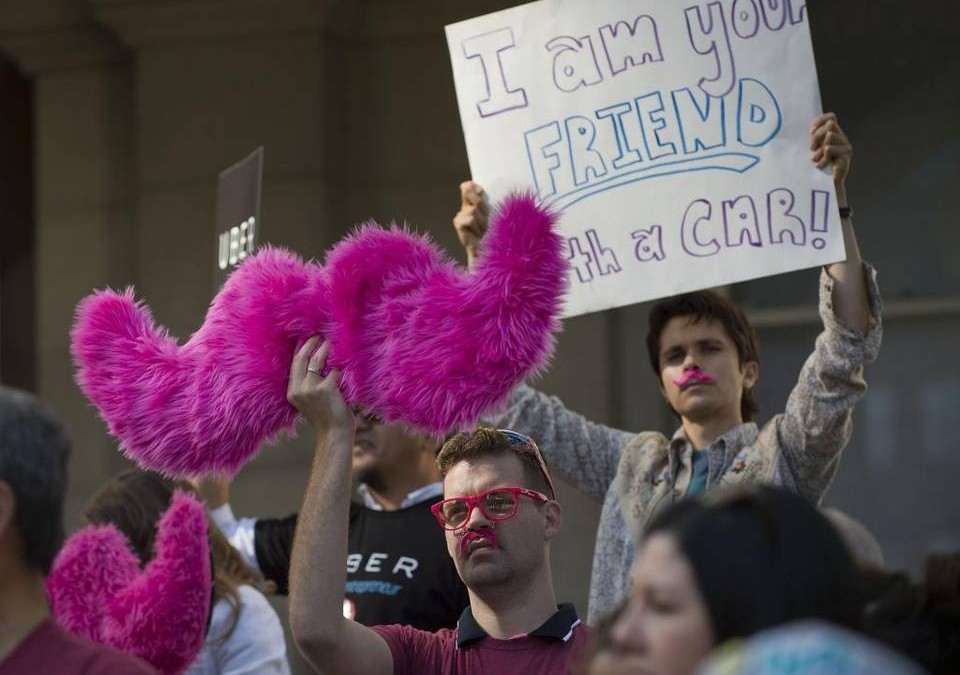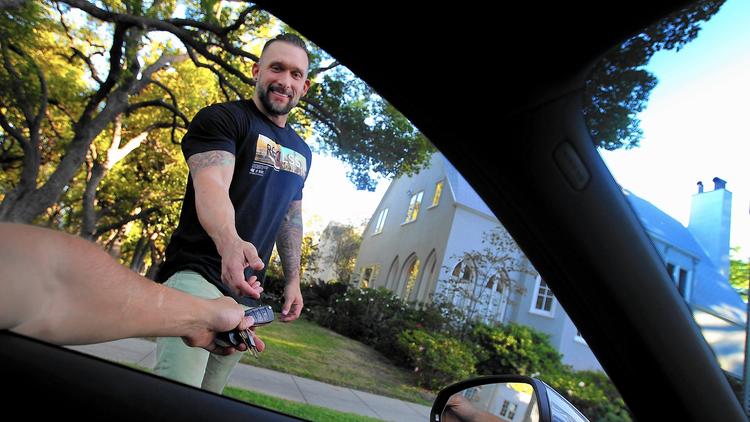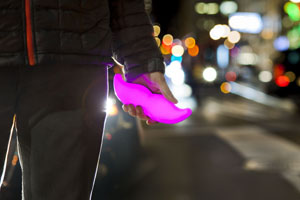
by Innovative Mobility Research | Sep 9, 2015 |
BY AMANDA M. EAKEN AND SUSAN A. SHAHEEN The sharing economy – the idea that we can access goods and services more affordably and with less effort by sharing the costs and responsibility with others – is taking hold, especially in transportation. PricewaterhouseCoopers predicts the global sharing economy could grow to as much as $335 billion in the next 10 years. California is poised to reap many early benefits of the sharing economy because three of the biggest brand names – Airbnb, Uber and Lyft – are based in the Bay Area. Much has been written about the sharing phenomenon from a consumer and business perspective, but little has been said about the environmental and social impacts of these rapidly growing enterprises, especially in transportation in California. Read more here:...

by mattchristensen00 | Jun 29, 2015 |
By Jerry Hirsch For at least 22 hours a day most cars sit parked, sucking up their owners’ money while waiting to be driven. For most people, it’s one of their most underutilized — but most expensive — assets. Now, some companies are devising ways to help people profit from their vehicles. Start-ups like RelayRides and Getaround help people rent out their cars during down time. Uber, Lyft and Sidecar connect car owners with people willing to pay for a ride. The rapid growth of these start-ups is transforming transportation — making it easier than ever before to get around without owning a car — and forcing automakers to devise new strategies to lure prospective buyers. Last week, Ford launched a car-sharing program that offers buyers a new way to offset the pains of ownership by tapping into what is essentially an Airbnb on wheels. And in Germany, General Motors launched a CarUnity app that lets owners of any brand rent their vehicles to Facebook friends or people in the app’s network. To read the full article, click...
by Innovative Mobility Research | Jun 18, 2015 |
By Michelle Quinn If the future of work is more about getting gigs and less about holding traditional jobs, what sort of protections will workers have? That’s what I’m wondering after news that the California Labor Commission ruled that a former Uber driver in California was technically an employee, and that the company owes her more than $4,000 to cover some of her costs. The decision is nonbinding and applies to just this one former driver, as the company points out. But we are only getting started talking how new companies in the so-called “sharing economy” are reshaping work and whether this new model — some have called these workers the “uncollared” — is something that benefits both workers and customers. “Innovation often gets out in front of public policy,” Susan Shaheen, an adjunct professor of civil and environmental engineering at UC Berkeley. It’s time for the companies, regulators, policymakers and the public to really look at whether this model — less “sharing” but more of a new tech middleman connecting service providers with users via an app — is a win-win for everyone, and if not, come up with new solutions. But workers, too, should have a say. Uber and other firms have given their drivers many opportunities they may not have previously had to earn money in a new way. If these services have to change to comply with state and federal labor laws, that could fundamentally change the relationship they have with their drivers. If Uber has to set schedules, pay benefits and send their drivers through an HR office just like a regular employer, will...

by Innovative Mobility Research | Jun 18, 2015 |
By Josh Stevens In the past year or so, two innovative companies emerged, amid bitter competition but parallel success, to solve some of transportation’s most vexing problems. They have brought spirited late-night revelers home safely. They have gotten travelers to the airport on time. They have dropped off sandwiches to hungry offices. They have given taxi companies fits. By some accounts, Uber and Lyft, which are each operating in dozens of metro areas around the country, have only one major challenge left to overcome. It is the one that has baffled transportation planners, highway builders, soccer moms and weary executives for generations: mobility in the suburbs. “I personally use these services to complete first-mile, last-time trips,” said Susan Shaheen, engineering professor and director of the Innovative Mobility Research program at the University of California, Berkeley. “It’s filling a gap and making it possible for me to take public transit into the city, versus driving.” Shaheen said that in a recent survey of ride-hail passengers who were getting out of cars in downtown San Francisco, a potentially significant number had begun their trips at transit stops. The ride-hailing companies’ ability to serve non-driving residents could be even more important than what they do for commuters or for business travelers. Campbell said that many of his passengers are elderly and that, despite the seeming divide between the smartphone and rotary phone generations, they have found the apps to be relatively easy to use. In many areas, these options could complement, or replace, services that are often costly and inefficient. These include paratransit and assistance for the elderly. “Agencies are raising this...

by mattchristensen00 | Jun 16, 2015 |
By Mike Isaac When Trae Vassallo’s children hop in the car to head to their after-school sports practice in the San Francisco Bay Area several times a week, it is not Ms. Vassallo, a full-time working mother of three, who drives them. Nor is it her husband, a nanny or any other caregiver. Instead, Ms. Vassallo, a venture capitalist with her own firm, has scheduled regular rides for her children using Shuddle, a start-up that lets parents book trips around town for their offspring. In Silicon Valley parlance, Shuddle is the Uber for kids. “It’s obviously leveraging the infrastructure that companies like Uber have figured out how to do well,” Ms. Vassallo, a former partner at the venture capital firm Kleiner Perkins Caufield & Byers who has invested in Shuddle, said of the start-up. Shuddle is just one of a growing number of services to piggyback on the groundwork laid by Uber, the popular ride-hailing service that lets users request cars with a few taps of their smartphone. Apart from an Uber-like service for the under-16 set, there is now also a service for Bay Area commuters (Chariot), a service for Manhattan (Via) and even a service for vans (Leap Transit). But unlike Uber, Lyft and Sidecar, which are disrupting the transportation market with all-purpose ride-booking services, these new companies focus on specific markets. To read the full article, click...





